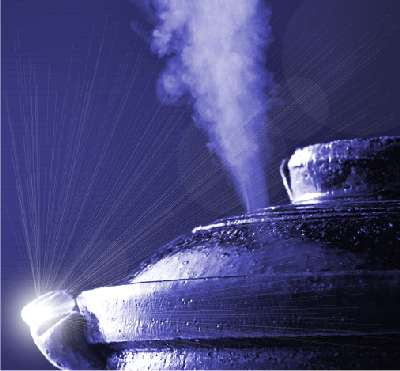
Equilibrium can refer to balance, but also to different states being equalized. For instance, the cabin pressure of an aircraft is much greater when cruising at altitude than the air outside, where the air is too thin to breathe. Although the Earth’s atmosphere is about 300 miles high, most of the air is in the lowest few thousand feet closest to the surface. Interestingly, the 14.7 pounds per square inch of atmospheric pressure at sea level allows us to breathe normally. As the aircraft descends, the difference between the cabin and atmospheric pressure outside becomes equalized; so we don’t notice the difference when we exit the plane.
Other examples of managing the equilibrium of different environments are when divers must take decompression stops as they ascend from depth. Also, astronauts spend a day in an airlock chamber acclimatizing their bodies, before opening the door and walking in space.
In a similar way, we experience internal pressure when we’re feeling stressed or anxious. This can be through physical tension and muscle tightness in our body, restless thoughts in our mind, and unsettling feelings.
Sometimes we’re faced with challenging situations that we have no power to influence or resolve directly. We can find ourselves in a pressurized personal bubble, feeling as if we need to let off steam without an outlet. Like a forgotten pressure cooker whistling in the dark, when we’re in this state we can become irritable, intolerant, and heated; not a comfortable place to be. And when we experience this stress level, we’re more likely to look in the wrong places for a solution, or quick fix.
So, how can mindfulness skills help us discover equilibrium when we’re under pressure?
- The first step is becoming aware of the internal pressure as it starts to rise with tension in your body, emotional turbulence, or restless thoughts.
- Then, with kindness and self-compassion, acknowledge that you may be going through a difficult time.
- Remaining watchful and not dwelling on automatic worrying or negative thoughts.
- Acknowledging and accepting the situation as it really is; exploring options to see if there is any way of resolving any conflict or difficulty.
- Extending your awareness outside to discover and connect with the stillness, space, and silence that’s always in the background; underneath all the sounds, thoughts, movement, and noise.
- Then connecting with the breath and imagining opening a valve to allow the outside to equalize with your experience inside; letting go and releasing tension and tightness. Take a long deep breath and slowly exhale; allowing the mind to settle and emotions to dissolve, as far as you can.
When we experience high stress and anxiety, it’s often difficult to remember and make use of the self-care skills we’ve learned. With practice and persistence, we can make a real difference and find equilibrium between our inner state and the peace and calm of the outer world. Practising mindfulness is about turning towards difficulties when they appear in our lives. Consistent practice allows us to change how we relate to these situations and discover the inner resources that help us navigate through life’s challenges with kindness, insight, and equilibrium.
Suggested weekly practice
- Remember to check in with yourself during the day by asking, “What’s going on for me now?” and see if any internal tension or pressure is building up.
- Connect with nature, sensing the space and openness, and see if you can equalize the inner and outer.
- Bring openness, kindness, and self-compassion to accept and acknowledge when under pressure.
Guidance
Find somewhere undisturbed and sit in a comfortable, dignified, and upright posture, where you can remain alert and aware. There are two guided practices for this session. You can close your eyes, or lower your gaze while the meditations play.
- Play the settling practice, then read through the session content, which you can print off if that helps
- Then play the second audio to explore and experience finding equilibrium within yourself and the outside world
Share on
